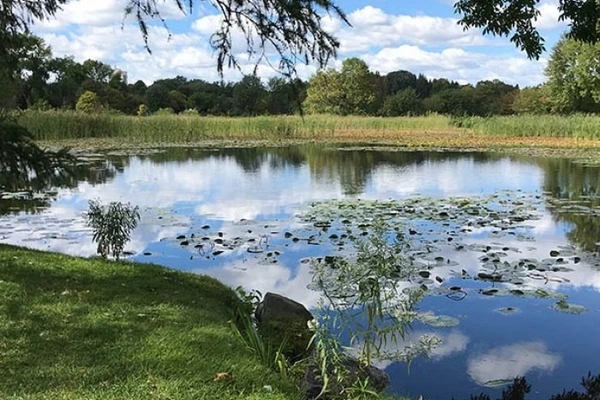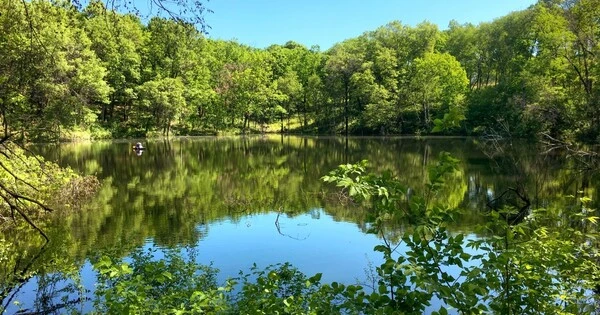Urban ponds are artificial bodies of water that are created in urban or suburban areas, typically for recreational or aesthetic purposes. These ponds can play an important role in supporting biodiversity and providing habitat for a wide range of species, from insects and amphibians to birds and mammals. However, urban ponds also face a number of challenges that can negatively impact their ecological health and the diversity of species they support.
According to new research, aquatic plants can be used as a tool to improve coexistence between aquatic invertebrates and their fish predators in urban ponds.
Ponds are an essential component of urban green-blue infrastructure. They provide many ecosystem services to city dwellers, such as recreation and biodiversity support. Recreation, on the other hand, may be incompatible with biodiversity conservation. Fish introduced for recreational purposes, for example, can reduce the diversity of aquatic invertebrates, limiting the value of urban ponds for aquatic biodiversity conservation.
A research team at the University of Helsinki investigated how aquatic plants can be utilised as a tool to enhance the co-existence between aquatic invertebrates and their fish predators in urban ponds.
In urban ponds, however, aquatic plants are sometimes removed to create tidy appearance, but it is not really good for biodiversity, because aquatic invertebrates need plants for various purposes, such as prey refuges to hide from predators.
Wenfei Liao
Emergent plants like sedges can increase the number of diving beetles in a pond. Diving beetles are an indicator taxon of pond biodiversity, and when fish are present in the pond, they have a greater need for emergent plants as prey refuges. Diving beetles appear in ponds with fish when approximately 40% of the pond margins are vegetated by emergent plants such as sedges and cattails.
In comparison, diving beetles have a high probability of occurring in ponds with fish when approximately 30% of the margins are vegetated. This is because diving beetles are less vulnerable to predation in ponds without fish.
“In urban ponds, however, aquatic plants are sometimes removed to create tidy appearance, but it is not really good for biodiversity, because aquatic invertebrates need plants for various purposes, such as prey refuges to hide from predators,” says researcher and corresponding author Wenfei Liao from the Faculty of Biological and Environmental Sciences, University of Helsinki.
The more aquatic vegetation, the better? Not always!

Diving beetles have different needs for emergent plants at different scales. At the pond scale, diving beetle presence is positively correlated with vegetation cover.
However, when the researchers looked at diving beetle diversity in 1m1m microhabitats in the ponds, they discovered a different pattern: The findings show that the effects of emergent plant cover on diving beetle diversity differ between ponds with and without fish at the microhabitat scale. The more vegetation a microhabitat has in ponds with fish, the more diving beetle species and individuals there are. However, in ponds without fish, diving beetle diversity is not correlated with emergent plant cover; that is, a similar number of diving beetle species can be found in vegetated and non-vegetated areas. This is because, in the absence of fish, diving beetles face little predation and can seek food in both vegetated and non-vegetated areas.
“Vegetated spots in urban ponds are good starting places for city people to observe aquatic insects and understand urban nature. However, we should remember some insects, such as the larvae of some caddisfly species, may prefer open water; therefore, in aquatic habitat management, it is beneficial to maintain both vegetated and non-vegetated microhabitats to keep habitat heterogeneity. This is to ensure urban ponds meet the needs of different aquatic insects and support high aquatic biodiversity,” concludes Liao.
One of the biggest challenges facing urban ponds is pollution. Runoff from nearby roads, parking lots, and other impervious surfaces can carry pollutants like oil, pesticides, and fertilizers into the pond, which can harm the plants and animals that live there. Additionally, urban ponds often have high nutrient levels due to runoff from nearby lawns and gardens, which can cause algal blooms that further degrade the water quality.
















